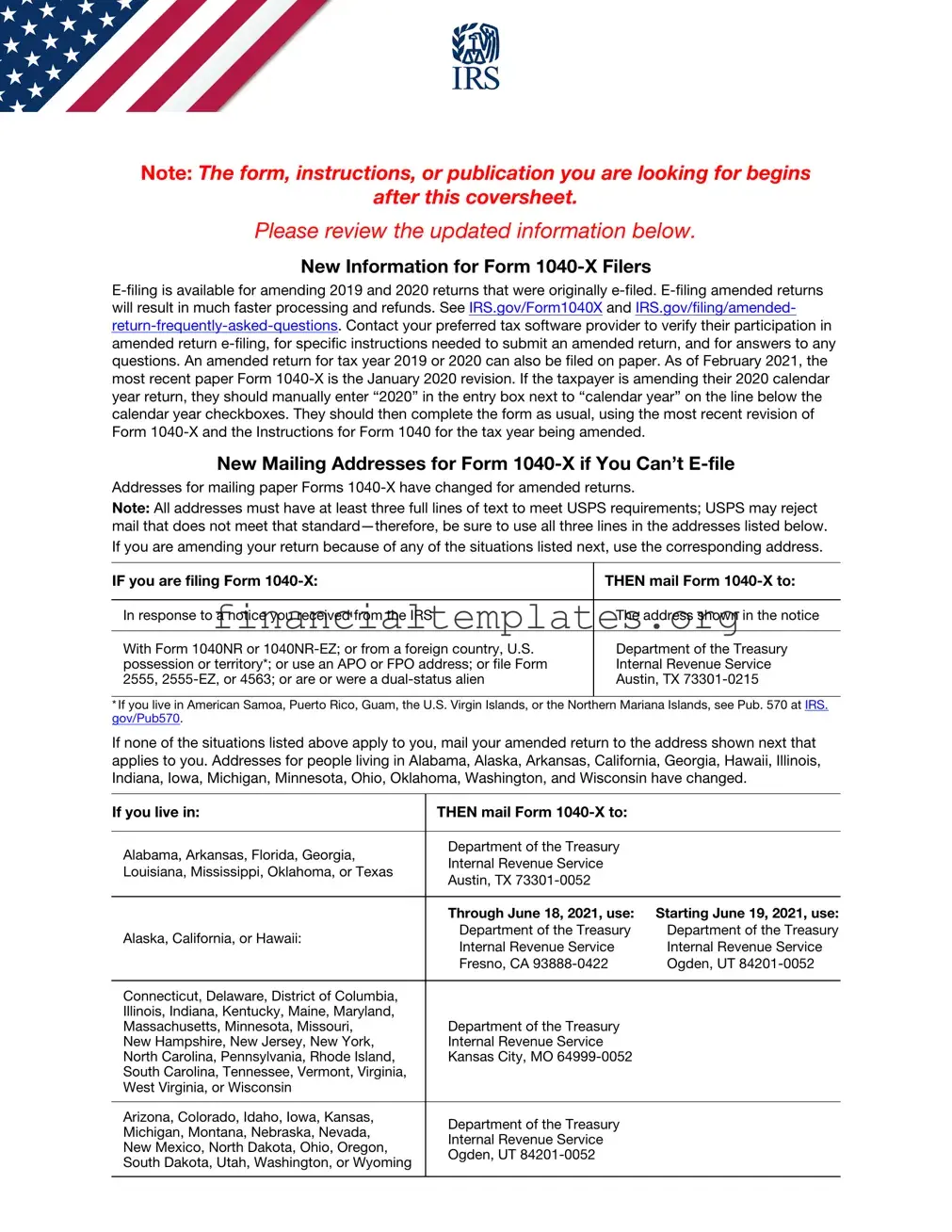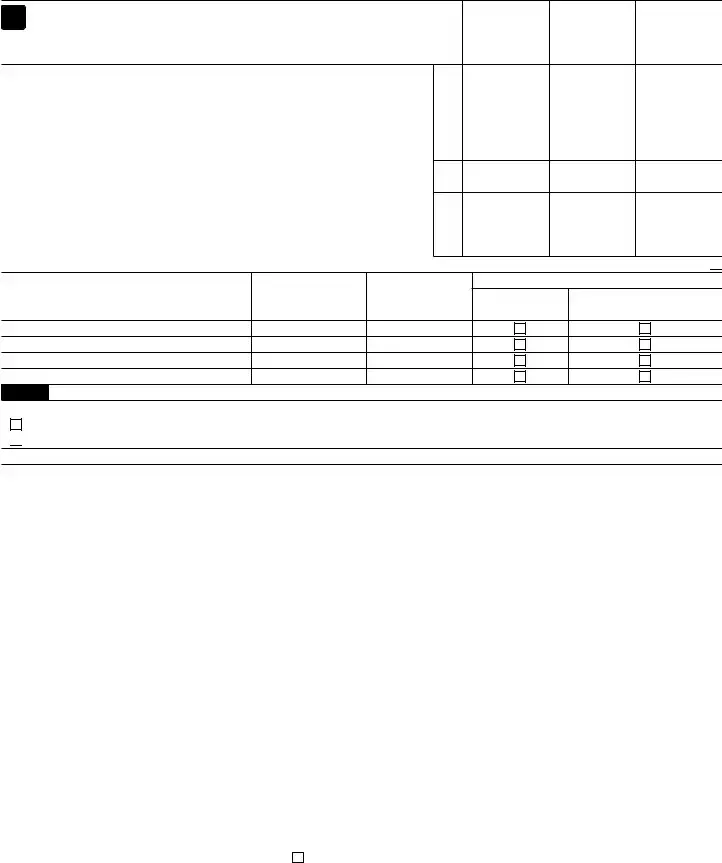The IRS 1040-X form, used for amending previously filed tax returns, bears resemblance to several other documents, both within and outside the realm of tax filings. One such document is the IRS 1040 form itself, which individuals use to file their annual income tax returns. The 1040 form serves as the original submission, while the 1040-X is used to correct any errors or report changes after the original form has been filed. Both forms are integral to managing one’s personal federal income tax obligations, with the primary difference being their timing and purpose in the tax reporting process.
Another document similar to the IRS 1040-X form is the 1040-ES form, which is used for estimating future tax payments. While the 1040-ES helps individuals calculate and pay estimated taxes quarterly, the 1040-X is used post-factum to adjust any discrepancies on previous returns. Both forms involve a close examination of one’s income and deductions, albeit with different objectives – one is forward-looking, and the other corrects the past.
The W-2 form, issued by employers to report an employee's annual wages and the amount of taxes withheld from their paycheck, also shares similarities with the 1040-X. While primarily serving different functions, both documents are crucial for accurately reporting and correcting personal income information. The 1040-X may require information from W-2 forms if the amendment involves changes to income or tax withholding figures.
Form 4868, which is the Application for Automatic Extension of Time To File U.S. Individual Income Tax Return, shares a focus on tax deadlines with the 1040-X. Though one extends the filing deadline and the other amends a filed return, both recognize the need for adjustments within the tax filing process, accommodating circumstances that prevent on-time or accurate submissions on the first attempt.
Akin to the 1040-X, the Schedule A (Form 1040) document is used for itemizing deductions that taxpayers want to claim, such as mortgage interest, state tax payments, or charitable contributions. When filing an amended return with a 1040-X, changes to itemized deductions initially reported on Schedule A may be necessary, making these documents closely linked in the tax amendment process.
The IRS Form 8822, Change of Address, though administratively different, shares the concept of updating previously submitted information with the 1040-X form. While the 8822 form specifically relates to updates in a taxpayer's address, the 1040-X encompasses a broader range of amendments, including income, deductions, and credits, reflecting the dynamic nature of an individual’s fiscal situation.
Form 1099, which encompasses various types such as the 1099-MISC for freelancers or the 1099-INT for interest income, is essential for reporting income outside of traditional employment. Amendments made with a 1040-X often rely on accurate information from 1099 forms, especially if the original tax return omitted or inaccurately reported additional income sources. Thus, both play pivotal roles in ensuring the comprehensiveness and accuracy of reported earnings.
Similar to the 1040-X, the Form 8938, Statement of Specified Foreign Financial Assets, involves disclosing additional financial details that could affect tax obligations. Individuals might need to amend their tax return via Form 1040-X if previously unreported or misreported foreign assets need to be corrected, underscoring the interconnectedness of various reporting obligations.
State tax amendment forms, which vary by U.S. state, are the state-level counterparts to the federal 1040-X form. While the specifics can differ according to state tax laws, the purpose aligns closely with the 1040-X – to correct or update previously submitted state tax returns. Just as the 1040-X ensures federal tax compliance, these state forms maintain accuracy in state tax obligations.
Last but not least, the IRS Form 7004, Application for Automatic Extension of Time to File Certain Business Income Tax, Information, and Other Returns, shares the premise of flexibility in filing like the 1040-X but for businesses. While the 7004 provides businesses extra time to file their returns, the 1040-X offers individuals the opportunity to correct inaccuracies post-submission, highlighting a shared recognition of the complexities in tax reporting and the need for amendments.



 Check here if this is a joint return and your spouse did not previously want $3 to go to the fund, but now does.
Check here if this is a joint return and your spouse did not previously want $3 to go to the fund, but now does.